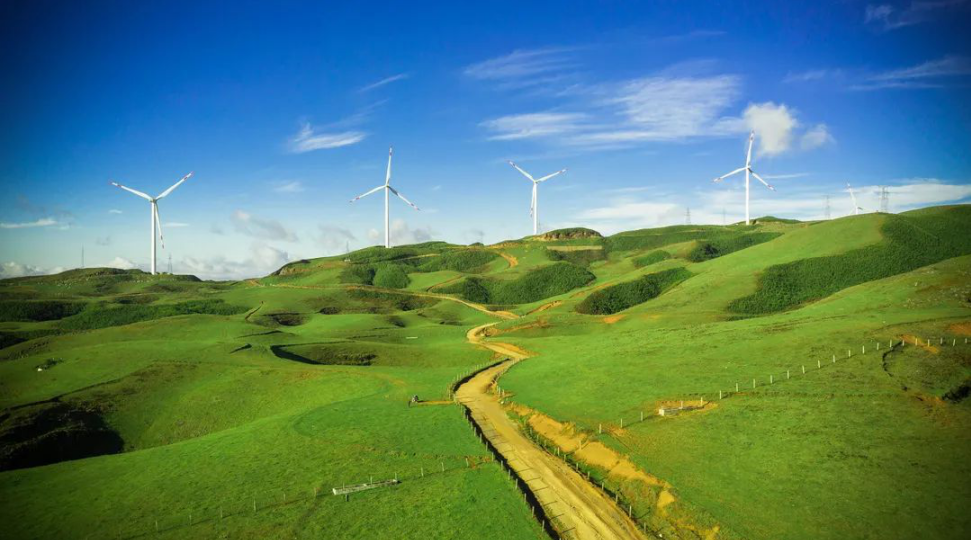The International Energy Agency’s recently released “Renewable Energy Market Update” report concludes that due to policy support, rising fossil fuel prices, and the aggressive promotion of solar and wind power generation projects, it is expected that the global installed renewable energy capacity will be increased by 1/3 this year, and that the global renewable energy generation capacity will continue to grow next year. According to this trend, it is expected that the world will have enough solar PV manufacturing capacity by 2030.
Photovoltaic power generation and wind power will realize double growth
The International Renewable Energy Agency (IRENA) in the recently released World Energy Transition Outlook 2023, Volume 1, statistics show that the global installed renewable energy capacity increased by a record 300 GW in 2022. Fatih Birol, executive director of the IEA, said that the global renewable energy additions are expected to reach a record high this year. Among other things, solar and wind energy are leading the rapid growth of the global renewable energy economy.
The IEA report predicts that this year the world will have 380 billion U.S. dollars of investment flow to the solar energy field, the investment amount will exceed the investment in the oil field for the first time. The new installed capacity of photovoltaic will account for 2/3 of the new installed capacity of renewable energy this year. it is expected that the manufacturing capacity of the photovoltaic industry will more than double by 2024, reaching 1,000 gigawatts. In addition to large-scale photovoltaic power plant in many regions of the world put into construction, small photovoltaic power generation system is also a rapid increase in trend. The report also predicts that with the new crown epidemic during the wind power project had been postponed one after another began to promote, this year the global wind power generation capacity will rebound significantly, year-on-year growth of about 70%. Fatih Birol said, solar and wind power and other renewable energy generation costs are getting lower and lower, and more and more countries recognize that the development of renewable energy is not only conducive to combating climate change, but also provide an important solution to the problem of energy security.
The IEA report predicts that the total global renewable energy capacity will continue to grow next year, reaching 4,500 GW. IEA Director General Francisco Lacamera emphasized that by 2030, the world must add an average of 1,000 gigawatts of new installed renewable energy capacity per year and significantly increase the direct use of renewable energy endpoints in order to achieve ambitious climate targets.
Many countries continue to invest more
Globally, the green and low-carbon transition has continued to inject new momentum into the world’s economic development. Countries are increasingly emphasizing and continuously increasing their investment in the field of renewable energy, and the growth momentum in the relevant fields is obvious.
According to the German energy regulator Federal Network Agency data, the first quarter of this year, Germany new photovoltaic installed capacity of more than 2.6 GW. As of the end of January this year, the cumulative installed capacity of photovoltaic reached 68.2 GW. The German Federal Ministry of Economics and Climate Protection has formulated a strategy for the development of the photovoltaic industry in 2023 to ensure the realization of the goals set by the Renewable Energy Act. The German government has proposed a plan to increase installed PV capacity to 215 GW by 2030.
Brazil has introduced a number of initiatives to encourage the development of renewable energy. The Brazilian National Development Bank provides special low-interest loans for wind power projects. The government also plans to install rooftop photovoltaic power generation equipment for schools, public health centers, and low-income groups’ homes to facilitate access to low-cost renewable energy. Data released by the Brazilian Electricity Trader’s Association shows that Brazil’s average monthly power generation in 2022 increased to about 67,000 megawatt-hours. Among them, the proportion of renewable energy generation reached 92%, close to 62,000 MWh, the highest record in nearly 10 years.
Vietnam has also embraced the development of renewable energy as an important avenue for the country’s green transformation.2021 The country approved a national strategy for green growth towards 2050. According to the strategy, Vietnam will increase the share of renewable energy in its total primary energy supply to 15-20 percent in the 2021-2025 period, and to 25-30 percent by 2050.
The South African government established the South African Presidential Commission on Climate in 2020 with the aim of advising on issues such as energy transition. The commission recently said that solar and wind will increase from 7% to 40% of South Africa’s energy mix by 2030, which is the fastest way out of the power crisis and the most economical option to meet its climate commitments.
The Africa Energy Outlook 2022 report released by the International Energy Agency shows that Africa has 60% of the world’s solar energy resources, and renewable energy sources such as wind, geothermal and hydroelectric are also abundant. The United Nations Economic Commission for Africa believes that power supply is an urgent challenge for Africa, and the development of renewable energy can be used to partially meet the continent’s rapidly growing demand for electricity.
China actively contributes to the global energy transition
The International Energy Agency pointed out in its report that China is a global leader in the field of renewable energy, and it is expected that China will account for 55% of the global installed capacity of new renewable energy this year and next year. With the advantages of technology and equipment, Chinese enterprises actively carry out international cooperation to promote the development of global renewable energy. Francisco Lacamera said, “China plays a key role in the global energy transition and the promotion of sustainable development, and the realization of the goals of the Paris Agreement and the fight against climate change require China’s participation and support.”
In recent years, more and more Chinese companies are investing in the renewable energy sector in Kazakhstan. According to the data of China Power Kazakhstan Energy Investment Co Ltd, by the end of 2022, the total installed capacity of renewable energy projects participated by Chinese enterprises in Kazakhstan has exceeded 1,000 MW.At the end of 2022, the first phase of the wind power project in the Akmola region of northern Kazakhstan, which was invested and constructed by a Chinese enterprise, was successfully connected to the grid with 30 150 MW generating units, and the second phase of 55 MW is expected to be connected to the grid in September this year. After the full capacity is connected to the grid, it can provide about 600 million kilowatt hours of clean electricity for the local community every year.
In Argentina’s northwestern province of Jujuy, one of the world’s highest-altitude large-scale photovoltaic projects, the Gauchari Photovoltaic Power Generation Project, was officially put into commercial operation in September 2020 . The project will reduce 325,000 tons of carbon dioxide emissions annually while meeting the electricity needs of about 100,000 households. Roberto Salvareza, former minister of science and technology of Argentina, said China has helped Latin American countries accelerate their energy transition by driving local infrastructure construction through investment and technology exchanges.
China attaches great importance to strengthening cooperation with Africa in the field of renewable energy. So far, the two sides have implemented hundreds of renewable energy and green development projects within the framework of the Forum on China-Africa Cooperation. In March 2022, the first unit of Nigeria’s Zungeru Hydropower Station, constructed by a Chinese enterprise, will be officially connected to the grid. The power station is designed to generate 2.64 billion kilowatt-hours of electricity annually, and when fully completed, it will be able to meet twice the electricity demand of Abuja, the capital of Nigeria.
Lolade Apila, head of Nigeria’s Energy Transformation Office of the United Nations Sustainable Energy for All organization, said that although Africa is blessed with advantages in developing renewable energy, it is facing practical difficulties such as backwardness in infrastructure and shortage of technical personnel. China has a lot of successful experience in developing hydropower, photovoltaic, wind power and energy storage. Both sides to increase in personnel training, technical cooperation, investment and financing and other aspects of cooperation, will help Africa to improve the level of renewable energy industry construction.
International rating agency Standard & Poor’s Global Commodity Insight website published an article pointing out that China has become the world’s leading exporter of photovoltaic and wind power equipment. China is actively carrying out bilateral and multilateral cooperation, and exchanging technology and talents with its partners, which is conducive to promoting the development of global renewable energy.





